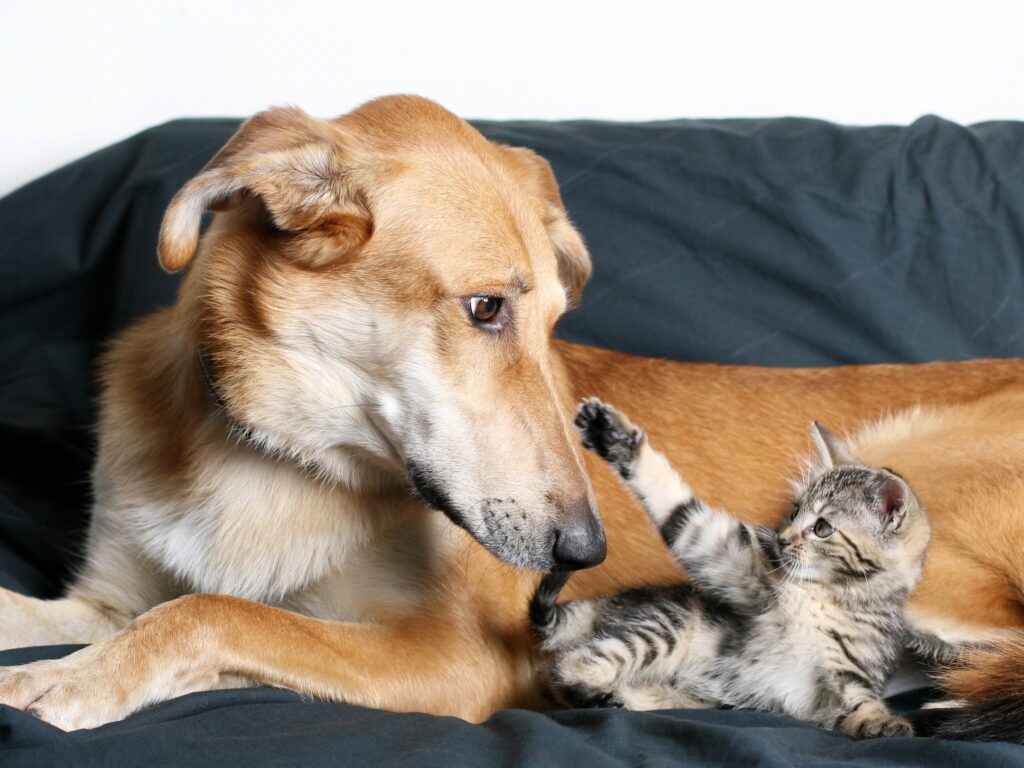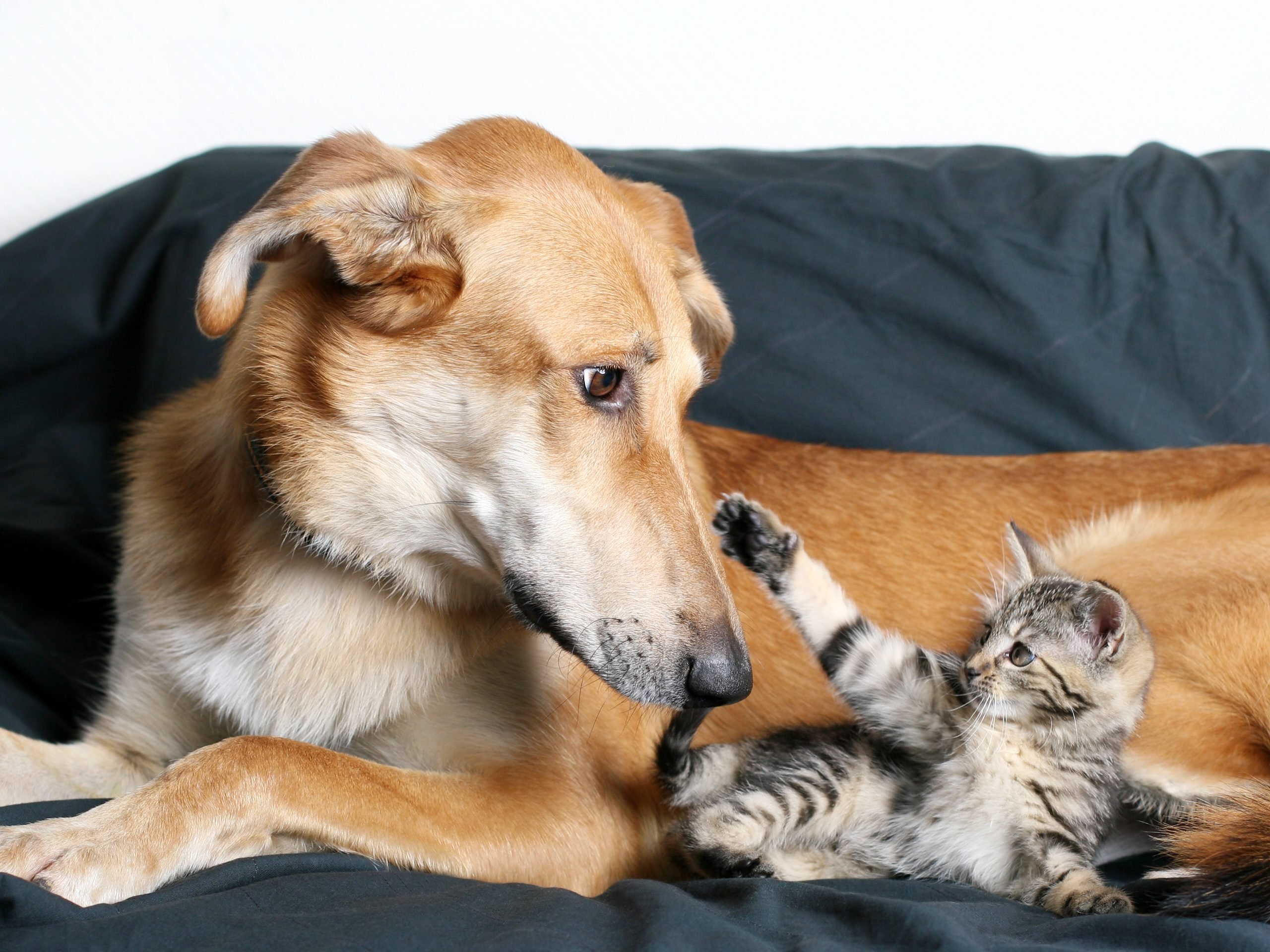
Cats and Dogs: Understanding the Dynamics of Coexistence
The age-old question: can cats and dogs truly live together in harmony? The answer, while nuanced, is a resounding yes. While popular culture often portrays them as arch-enemies, the reality is that cats and dogs are capable of forming strong bonds and coexisting peacefully. However, successful coexistence requires understanding their different communication styles, needs, and behaviors. This article delves into the complexities of introducing and maintaining a harmonious household for both cats and dogs, offering practical tips and insights for pet owners.
Understanding Feline and Canine Communication
One of the primary reasons for conflict between cats and dogs stems from miscommunication. Cats rely heavily on subtle body language, such as ear position, tail movements, and scent marking. Dogs, on the other hand, are more vocal and expressive in their body language. What a dog perceives as playful behavior, a cat might interpret as aggression, and vice versa. For instance, a dog’s wagging tail signifies happiness, while a cat’s wagging tail often indicates agitation or annoyance. Understanding these differences is crucial for preventing misunderstandings.
Key Differences in Communication Styles
- Body Language: Cats are subtle, dogs are expressive.
- Vocalization: Dogs bark and whine, cats meow and purr (and hiss when threatened).
- Scent Marking: Cats use scent to define territory; dogs rely more on visual cues.
Introducing Cats and Dogs: A Gradual Process
The introduction process is paramount to establishing a positive relationship between cats and dogs. Rushing the process can lead to fear, anxiety, and aggression. A gradual, controlled introduction allows both animals to acclimate to each other’s presence at their own pace.
Step-by-Step Introduction Guide
- Scent Swapping: Before visual contact, introduce each animal to the other’s scent. Swap bedding or toys so they can become familiar with the smell.
- Controlled Visual Exposure: Allow brief, supervised visual encounters through a barrier, such as a closed door or a crate. Keep these sessions short and positive, using treats and praise.
- Supervised Interactions: Once both animals appear calm and relaxed during visual exposure, allow short, supervised interactions in a neutral space. Keep the dog on a leash initially.
- Gradual Freedom: Gradually increase the duration and frequency of supervised interactions, eventually allowing them more freedom to interact without direct supervision.
Creating a Safe and Comfortable Environment
A key element in fostering peaceful coexistence between cats and dogs is providing each animal with their own safe space. This includes separate feeding areas, resting spots, and litter boxes for cats. Ensure that the cat has access to high places, such as shelves or cat trees, where they can retreat and observe their surroundings from a position of safety. This is especially important if the dog has a strong prey drive.
Essential Resources for Cats and Dogs
- Separate Feeding Areas: Prevent food aggression by feeding cats and dogs in separate locations.
- Individual Resting Spots: Provide each animal with their own comfortable bed or resting area.
- Litter Box Placement: Ensure the cat’s litter box is in a private and accessible location, away from the dog.
- Elevated Spaces for Cats: Cat trees, shelves, and other elevated surfaces allow cats to feel safe and secure.
Managing Potential Conflicts
Even with careful introductions and a well-managed environment, conflicts between cats and dogs can still arise. It’s crucial to be prepared to address these conflicts effectively and safely.
Strategies for Conflict Resolution
- Intervene Early: Recognize the early signs of tension, such as staring, growling, or hissing, and intervene before the situation escalates.
- Distract and Redirect: Use a loud noise or a toy to distract the animals and redirect their attention.
- Separate the Animals: If a fight occurs, separate the animals immediately and allow them time to calm down before reintroducing them.
- Consult a Professional: If conflicts are frequent or severe, consult a veterinarian or a certified animal behaviorist for guidance.
The Benefits of Cats and Dogs Living Together
Despite the challenges, the benefits of cats and dogs living together can be significant. They can provide companionship, reduce stress, and create a more enriching environment for each other. Many owners find that their cats and dogs develop deep bonds and enjoy playing and cuddling together. The key is patience, understanding, and a commitment to creating a harmonious household.
Potential Benefits of Multi-Pet Households
- Companionship: Reduces loneliness and boredom for both cats and dogs.
- Increased Activity: Can encourage more play and exercise.
- Socialization: Helps animals develop social skills and learn to interact with others.
- Reduced Stress: The presence of a companion animal can lower stress levels.
Training and Socialization
Proper training and socialization are essential for successful cats and dogs coexistence. A well-trained dog is more likely to respect a cat’s boundaries, while a well-socialized cat is less likely to be fearful or aggressive towards a dog. Enrolling both animals in training classes can help them learn basic commands and improve their social skills. [See also: Dog Training Tips for Beginners]
Training Tips for Dogs
- Teach Basic Commands: “Sit,” “stay,” and “leave it” are crucial for managing a dog’s behavior around cats.
- Reward Calm Behavior: Reinforce calm and respectful behavior towards the cat with treats and praise.
- Manage Prey Drive: If the dog has a strong prey drive, work on redirecting their attention and controlling their impulses.
Socialization Tips for Cats
- Early Exposure: Expose kittens to dogs at a young age to help them become comfortable around them.
- Positive Reinforcement: Associate dogs with positive experiences, such as treats and playtime.
- Provide Escape Routes: Ensure the cat has access to safe places where they can retreat if they feel threatened.
Addressing Breed Considerations
Certain breeds of cats and dogs are naturally more predisposed to getting along than others. For example, some dog breeds, such as Golden Retrievers and Labrador Retrievers, are known for their gentle and tolerant nature, making them more likely to coexist peacefully with cats. Conversely, some terrier breeds have a high prey drive and may be more challenging to integrate into a household with cats. Similarly, some cat breeds, such as Ragdolls and Persians, are known for their laid-back personalities and may be more adaptable to living with dogs. [See also: Best Dog Breeds for Families with Cats]
Breed-Specific Considerations
- Dog Breeds: Consider the dog’s breed characteristics, such as prey drive, energy level, and temperament.
- Cat Breeds: Consider the cat’s breed characteristics, such as sociability, adaptability, and tolerance.
- Research: Research the specific breeds you are considering to understand their potential compatibility.
Health and Safety Considerations
When cats and dogs live together, it’s important to be aware of potential health and safety concerns. Ensure that both animals are up-to-date on their vaccinations and parasite preventatives. Keep medications and cleaning supplies out of reach to prevent accidental ingestion. Be mindful of potential food allergies or sensitivities and provide each animal with a balanced and appropriate diet. [See also: Pet Safety Tips for a Healthy Home]
Key Health and Safety Measures
- Vaccinations and Parasite Prevention: Protect both animals from preventable diseases and parasites.
- Medication and Chemical Safety: Store medications and cleaning supplies safely out of reach.
- Dietary Considerations: Provide each animal with a balanced and appropriate diet.
- Emergency Preparedness: Have a plan in place for emergencies, such as natural disasters or medical emergencies.
Conclusion: Fostering Harmony Between Cats and Dogs
Creating a harmonious household for cats and dogs requires patience, understanding, and a commitment to meeting each animal’s individual needs. By understanding their communication styles, providing a safe and comfortable environment, and managing potential conflicts effectively, you can foster a positive and enriching relationship between your feline and canine companions. While it may take time and effort, the rewards of seeing cats and dogs living together in peace and harmony are well worth the investment. Remember, every animal is an individual, and what works for one pair may not work for another. Be flexible, adaptable, and always prioritize the well-being of your pets.

